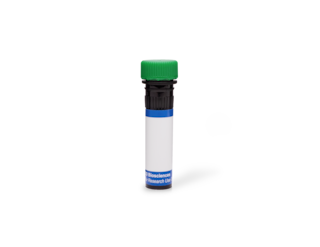-
Your selected location is
Middle East / Africa
- Change location/language
-
Reagents
- Flow Cytometry Reagents
-
Western Blotting and Molecular Reagents
- Immunoassay Reagents
-
Single-Cell Multiomics Reagents
- BD® OMICS-Guard Sample Preservation Buffer
- BD® AbSeq Assay
- BD® Single-Cell Multiplexing Kit
- BD Rhapsody™ ATAC-Seq Assays
- BD Rhapsody™ Whole Transcriptome Analysis (WTA) Amplification Kit
- BD Rhapsody™ TCR/BCR Next Multiomic Assays
- BD Rhapsody™ Targeted mRNA Kits
- BD Rhapsody™ Accessory Kits
- BD® OMICS-One Protein Panels
- BD OMICS-One™ WTA Next Assay
-
Functional Assays
-
Microscopy and Imaging Reagents
-
Cell Preparation and Separation Reagents
Old Browser
This page has been recently translated and is available in French now.
Looks like you're visiting us from {countryName}.
Would you like to stay on the current location site or be switched to your location?
BD Transduction Laboratories™ Purified Mouse Anti-CASK
Clone 7/CASK (RUO)




Western blot analysis of CASK on a rat cerebrum lysate. Lane 1:500, lane 2: 1:1000, lane 3: 1:2000 dilution of the mouse anti-CASK antibody.



Regulatory Status Legend
Any use of products other than the permitted use without the express written authorization of Becton, Dickinson and Company is strictly prohibited.
Preparation And Storage
Recommended Assay Procedures
Western blot: Please refer to http://www.bdbiosciences.com/pharmingen/protocols/Western_Blotting.shtml
Product Notices
- Since applications vary, each investigator should titrate the reagent to obtain optimal results.
- Please refer to www.bdbiosciences.com/us/s/resources for technical protocols.
- Caution: Sodium azide yields highly toxic hydrazoic acid under acidic conditions. Dilute azide compounds in running water before discarding to avoid accumulation of potentially explosive deposits in plumbing.
- Source of all serum proteins is from USDA inspected abattoirs located in the United States.
Companion Products


CASK is a recently identified cytosolic protein kinase with homology to the Ca2+/CaM-dependent kinases and the synaptic associated proteins SAPs/PSDs. Like the SAPs, CASK contains a PDZ domain, an SH3 region, and a guanylate kinase domain. However, unlike the rest of the PDZ protein family, the amino terminus of CASK has significant homology with the Ca2+/Calmodulin-dependent kinases. Although widely expressed, CASK is highly enriched in the synaptic plasma membrane where it associates with neurexins, the neuronal cell surface proteins. Neurexins are a complex family of surface proteins that act as receptors for a number of venoms and toxins and regulate the clustering of several ion channels at the synapse. In addition, neurexins bind heterotypically to neuroligins, therefore adjoining different cell types. Neuroligins bind intracellularly to PSD95 and related proteins, whereas neurexins bind to CASK through their C-terminal region and at CASK's PDZ domain. The interaction of neurexins and CASK at the outside of the cell may modulate CASK's activity and trigger an intracellular signaling cascade.
Development References (5)
-
Biederer T, Sudhof TC. CASK and protein 4.1 support F-actin nucleation on neurexins. J Biochem (Tokyo). 2001; 276(51):47869-47876. (Biology: Western blot). View Reference
-
Borg JP, Lõpez-Figueroa MO, de Taddèo-Borg M. Molecular analysis of the X11-mLin-2/CASK complex in brain. J Neurosci. 1999; 19(4):1307-1316. (Biology: Western blot). View Reference
-
Fallon L, Moreau F, Croft BG, Labib N, Gu WJ, Fon EA. Parkin and CASK/LIN-2 associate via a PDZ-mediated interaction and are co-localized in lipid rafts and postsynaptic densities in brain. J Biol Chem. 2002; 277(1):486-491. (Biology: Immunofluorescence, Western blot). View Reference
-
Hata Y, Butz S, Südhof TC. CASK: a novel dlg/PSD95 homolog with an N-terminal calmodulin-dependent protein kinase domain identified by interaction with neurexins. J Neurosci. 1996; 16(8):2488-2494. (Biology). View Reference
-
Irie M, Hata Y, Takeuchi M. Binding of neuroligins to PSD-95. Science. 1997; 277(5331):1511-1515. (Biology). View Reference
Please refer to Support Documents for Quality Certificates
Global - Refer to manufacturer's instructions for use and related User Manuals and Technical data sheets before using this products as described
Comparisons, where applicable, are made against older BD Technology, manual methods or are general performance claims. Comparisons are not made against non-BD technologies, unless otherwise noted.
For Research Use Only. Not for use in diagnostic or therapeutic procedures.